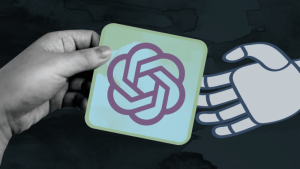AI And The New World Of Education
Owen Kichizo Terry, an undergraduate at Columbia University, broke down the harsh truth: ChatGPT doesn’t have to replace writing — something you can screen for — to be used in assignments. It can replace thinking. “[E]ven if we could definitively tell whether any given word was produced by ChatGPT, we still couldn’t prevent cheating. The ideas on the paper can be computer-generated while the prose can be the student’s own. No human or machine can read a paper like this and find the mark of artificial intelligence.”
This is a problem for the folks tasked with grading essays. It’s a problem for the way universities are structured. It’s a problem for the whole way we think about the education system — because the way we think about the education system is all wrong.
If we want to know how to deal with ChatGPT and its ilk in education, we have to change the way we think about education altogether.
Right now, our system is set up so that the outcome of education is being able to write the paper, know the answers to the tests, demonstrate proficiency in the learning outcomes. But those things are merely the symptoms of education. The work product — the paper — is a proxy for what we’re actually trying to deliver, which is learning.
If our focus is on grading and assessment, we teach to the test or the assignment — and that is a world in which ChatGPT becomes the invisible shaping hand behind every submitted critique, essay or book review.
Our focus needs to be on learning rather than on proving we’ve learned. We certainly should not focus on proving we learned via a take-home essay that can be written in moments by a machine.
I am all for using ChatGPT as an aid to thinking. But it needs to be an aid. We get into trouble when we outsource the job of thinking.
Let’s continue to assign essays — and then have students defend them in person, critique them, argue about them, take them apart. Let’s work out all the ways AI lies, and use it to teach students how to apply critical thinking to everything they read, see and hear. Let’s focus on learning in community, understanding that connecting with others is core to the human existence. Let’s focus on creating emotive learning experiences, ones that spark the joy of discovery as each new penny drops.
Above all, let’s remember that essays, homework, test performances, and even degrees are proxies. They are not the thing; they are the symptom of the thing. The thing is the thinking. The thing is the learning. The thing is the understanding.
“As it stands right now,” says Terry, “[w]e don’t fully lean into AI and teach how to best use it, and we don’t fully prohibit it to keep it from interfering with exercises in critical thinking. We’re at an awkward middle ground where nobody knows what to do, where very few people in power even understand that something is wrong.”
It’s time to step back and understand that something is deeply wrong. Time to appreciate we’ve been using proxies all along — and the proxies are obsolete. Time to forget about the proxies and focus on the real purpose of education: learning.
(9)
Report Post




